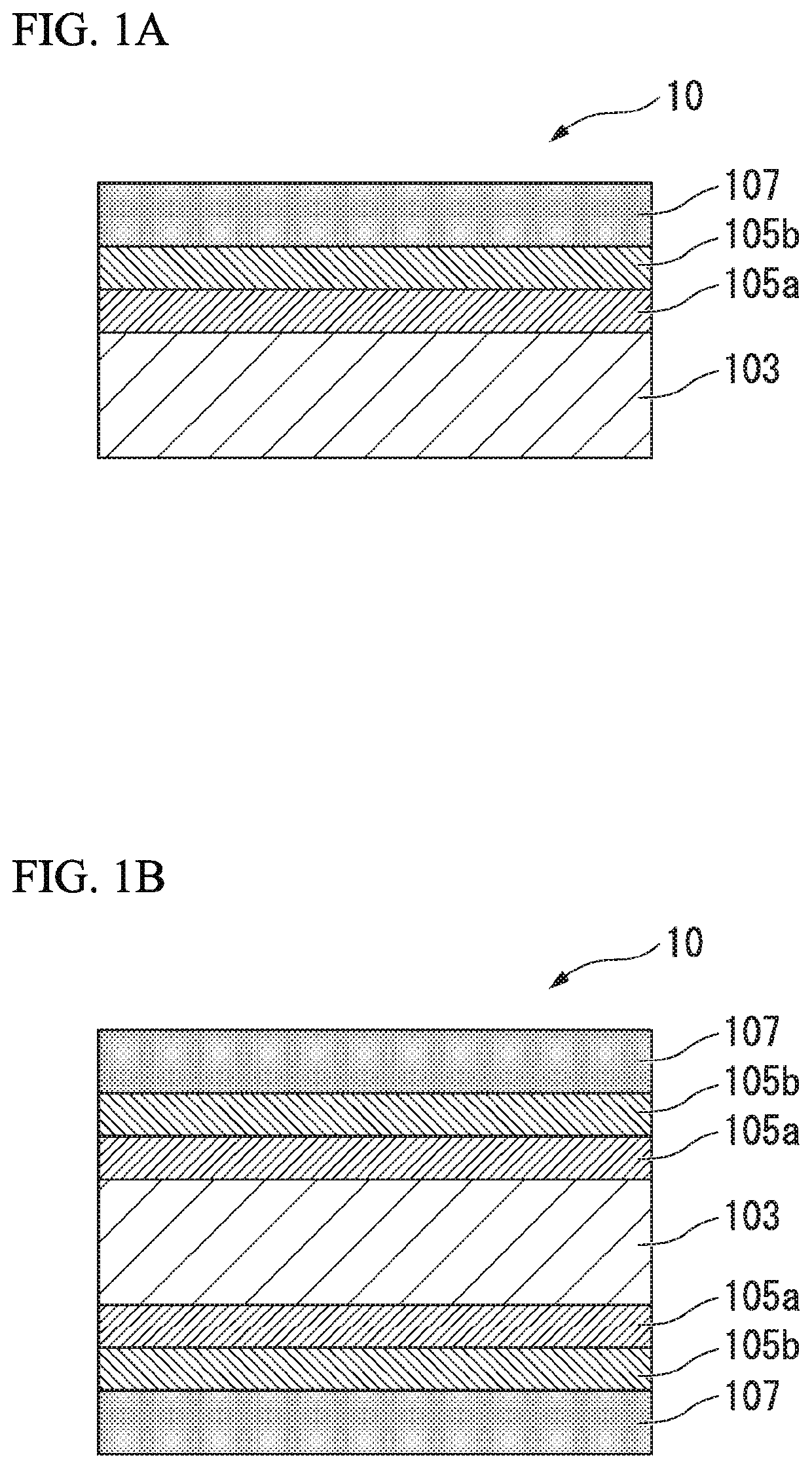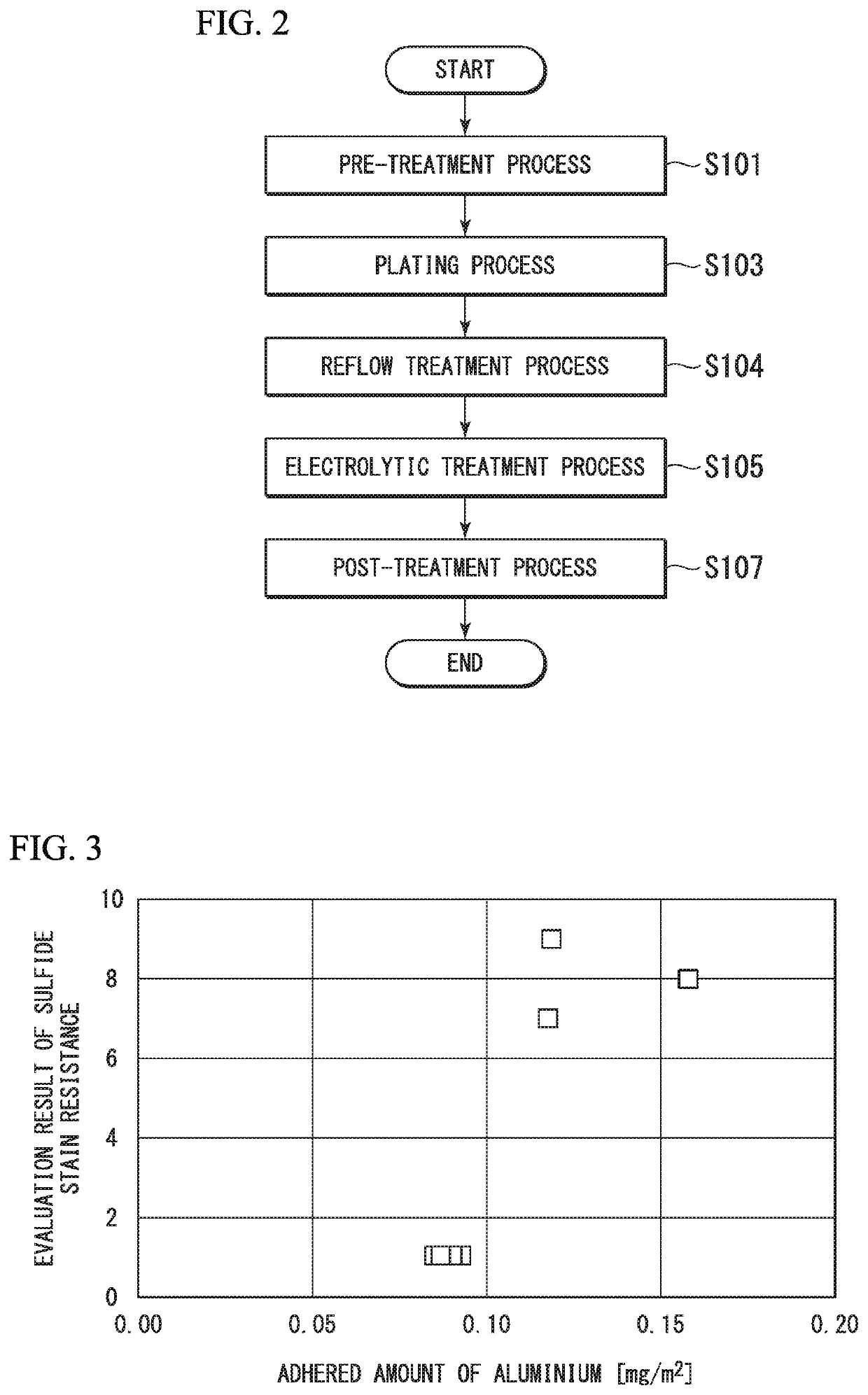Chemical treatment steel sheet and method for manufacturing chemical treatment steel sheet
- Summary
- Abstract
- Description
- Claims
- Application Information
AI Technical Summary
Benefits of technology
Problems solved by technology
Method used
Image
Examples
example 1
[0116]In Example 1, how sulfide stain resistance changes was examined by changing the amount of Al compound, without changing the amounts of Zr compound and phosphate compound in chemical treatment layers.
[0117]In Example 1, steel sheets that are generally used as steel sheets for containers were used as a base material. Fe—Sn alloy layers and Sn layers were formed on the steel sheets by performing reflow treatment in a state in which Sn-plated layers were formed on the steel sheets. The total amount of Sn contained in the Fe—Sn alloy layer and the Sn layer was set to 2.8 g / m2 per one surface for all samples.
[0118]Further, chemical treatment layers were formed by changing the concentration of Al compounds in the chemical treatment layers of each sample, and thereby a plurality of samples were produced. Here, the amount of Zr contained in the Zr compound in each sample was 8 mg / m2 per one surface, and the amount of P contained in the phosphate compound was 3 mg / m2 per one surface.
[01...
example 2
[0134]Next, how sulfide stain resistance changes while the amount of each component contained in each chemical treatment layer 107 is changed was examined.
[0135]More specifically, chemical treatment layers were formed on Sn layers using steel sheets on which Fe—Sn alloy layers and the Sn layers had been formed.
[0136]In addition, chemical treatment layers were formed using Al2(SO4)3 as a supply source of Al ions in Comparative Examples a5 and a6 while (NH4)3AlF6 was used as a supply source of Al ions in Invention Examples A1 to A18 and Comparative Examples a1 to a4.
[0137]With respect to the chemical treatment steel sheets of A1 to A18 and a1 to a6, the amounts of Zr, P, and Al contained in the chemical treatment layers were measured using a fluorescent X-ray adhesion meter, and then corrosion resistance and sulfide stain resistance thereof were evaluated.
[0138]In addition, for the amount of Al2O3 contained in the chemical treatment layers, peak intensity ratios of Al2O3, Al metal, an...
example 3
[0154]Next, how sulfide stain resistance changes according to the amount of Sn and the amount of each component contained in chemical treatment layers was examined.
[0155]The amount of S in each of the samples is shown in Table 2, and conditions for chemical treatment (conditions for chemical treatment solutions and conditions for electrolytic treatment) are shown in Table 3. The amounts of Zr, P, Al, and Al2O3 contained in the chemical treatment layers formed in each of the samples are shown in Table 4.
[0156]In addition, corrosion resistance and sulfide stain resistance were evaluated for each of the samples as in Example 2. The results are shown in Table 4.
[0157]Note that the chemical treatment layers were formed using Al2(SO4)3 as a supply source of Al ions in Comparative Examples b9 and b10 while (NH4)3AlF6 was used as a supply source of Al ions in Invention Examples B1 to B31 and Comparative Examples b1 to b8.
TABLE 2Plated LayerAmount of Sn as Sn metalSymbol(g / m2)InventionB117Ex...
PUM
| Property | Measurement | Unit |
|---|---|---|
| Temperature | aaaaa | aaaaa |
| Temperature | aaaaa | aaaaa |
| Fraction | aaaaa | aaaaa |
Abstract
Description
Claims
Application Information
 Login to View More
Login to View More - R&D Engineer
- R&D Manager
- IP Professional
- Industry Leading Data Capabilities
- Powerful AI technology
- Patent DNA Extraction
Browse by: Latest US Patents, China's latest patents, Technical Efficacy Thesaurus, Application Domain, Technology Topic, Popular Technical Reports.
© 2024 PatSnap. All rights reserved.Legal|Privacy policy|Modern Slavery Act Transparency Statement|Sitemap|About US| Contact US: help@patsnap.com









